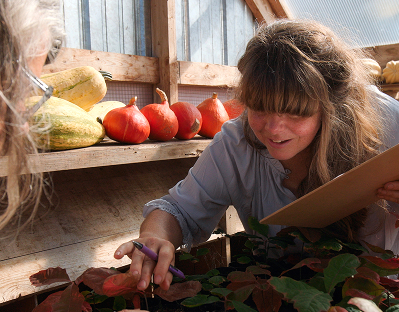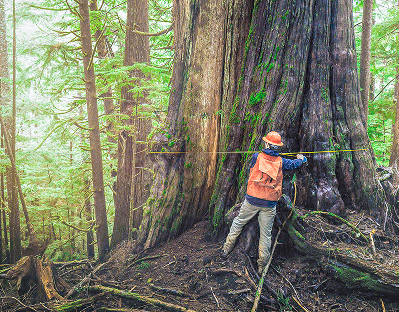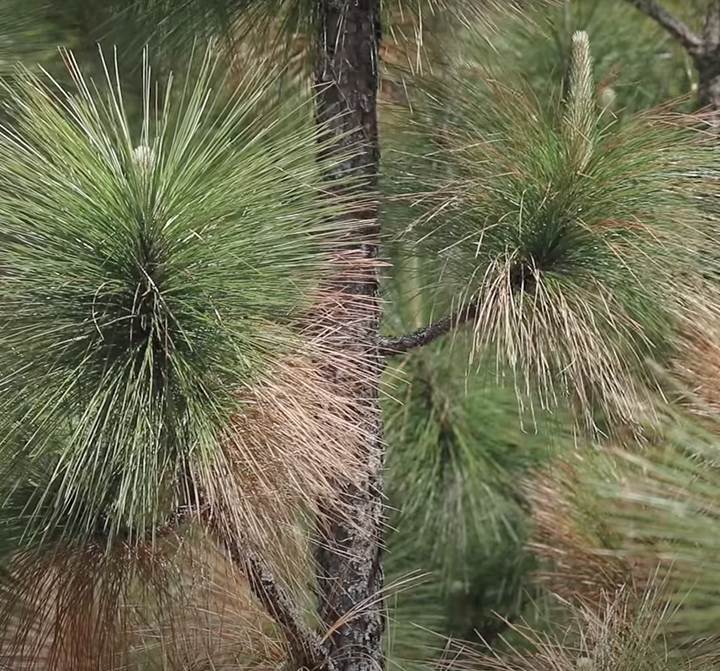
Reforestation in North Carolina
With approximately 61% of North Carolina’s land area covered by forests1, sustainable forest management and conservation in North Carolina are essential strategies to protect infrastructure, enhance local economies, and safeguard communities.

What difference do healthy forests make for communities in North Carolina?
Economic Benefits

Industry output and jobs: In 2022, North Carolina’s forest sector contributed approximately $42.5 billion in industry output, supporting around 152,000 full-time and part-time jobs.

Contribution to tourism and outdoor recreation: Healthy forests attract tourists and outdoor enthusiasts, supporting local businesses and generating revenue. A 2024 survey focusing on Western North Carolina revealed that outdoor recreation activities, many of which occur in forested settings, generated an economic output of $4.9 billion.

Cost Savings: Forested watersheds can reduce water treatment costs by up to 50%.
Water quality protection

Industry output and jobs: In 2022, North Carolina’s forest sector contributed approximately $42.5 billion in industry output, supporting around 152,000 full-time and part-time jobs.

Contribution to tourism and outdoor recreation: Healthy forests attract tourists and outdoor enthusiasts, supporting local businesses and generating revenue. A 2024 survey focusing on Western North Carolina revealed that outdoor recreation activities, many of which occur in forested settings, generated an economic output of $4.9 billion.

Cost Savings: Forested watersheds can reduce water treatment costs by up to 50%.
Habitat and biodiversity protection

Industry output and jobs: In 2022, North Carolina’s forest sector contributed approximately $42.5 billion in industry output, supporting around 152,000 full-time and part-time jobs.

Contribution to tourism and outdoor recreation: Healthy forests attract tourists and outdoor enthusiasts, supporting local businesses and generating revenue. A 2024 survey focusing on Western North Carolina revealed that outdoor recreation activities, many of which occur in forested settings, generated an economic output of $4.9 billion.

Cost Savings: Forested watersheds can reduce water treatment costs by up to 50%.
Forests help naturally remove and store carbon

Industry output and jobs: In 2022, North Carolina’s forest sector contributed approximately $42.5 billion in industry output, supporting around 152,000 full-time and part-time jobs.

Contribution to tourism and outdoor recreation: Healthy forests attract tourists and outdoor enthusiasts, supporting local businesses and generating revenue. A 2024 survey focusing on Western North Carolina revealed that outdoor recreation activities, many of which occur in forested settings, generated an economic output of $4.9 billion.

Cost Savings: Forested watersheds can reduce water treatment costs by up to 50%.
What can be done with more funding for coastal restoration?

Increase seedling production
Expand nurseries to produce more native seedlings, ensuring a diverse and resilient forest ecosystem. The North Carolina Forest Service’s Nursery Program produces an average of 15 million seedlings annually10. This is enough to plant approximately 30,000 acres of land each year[10].

Provide incentives for landowners
Provide financial incentives or tax breaks for private landowners who participate in reforestation projects. According to the Reforestation Hub, North Carolina has a significant reforestation opportunity, with approximately 5.37 million acres available. About 98% of this land is privately owned[8].

Enhance forest health and restoration
Implement more extensive forest health monitoring and pest management programs to protect against diseases and invasive species[11] .

Improve monitoring and maintenance
Implement advanced monitoring systems to track the health of reforested areas and address issues like pests or diseases promptly.

Increase community engagement and education
Increase outreach and education programs to raise awareness about the importance of forests and sustainable practices. This could involve more workshops, school programs, and community events[11] .

Increase funding for forest conservation
The state park system needs more than $300 million in funding to acquire new lands for its parks and recreation areas[7].
[Click for References]
1 North Carolina Association of County Commissioners: North Carolina Counties: Spending From Tourism in 2023. https://www.ncacc.org/wp-content/ uploads/2024/09/09_2024_TourismSpending.pdf
2 North Carolina Division of Marine Fisheries 2021 Coastal Habitat Protection Plan: https://files.nc.gov/ncdeq/Marine-Fisheries/coastal-habitat-protection-plan/ chpp-steering-committee-meetings/042021/Wetland-IP-final-Draft-CSC—4-7-21.pdf
3 Sea Grant North Carolina. Demand for N.C. Seafood and the Commercial Industry’s Economic Impact on the State (2021). https://ncseagrant.ncsu.edu/ demand-for-n-c-seafood-and-the-commercial-industrys-economic-impact-on-the-state/
4 (North Carolina Coastal Federation, 2015)
5 (Castagno et al., 2022)
6 (Smith et al., 2017)
7 (North Carolina Coastal Federation, 2023)
8 (USN4C, 2023)
9 (USN4C, 2023)
10 (Pew, 2023)
11 (North Carolina Natural and Working Lands Action Plan, 2020)
12 (NC DEQ)

Make the case for reforestation
Customize a PDF infographic to help you make the case for why reforestation is essential to empower and protect communities in North Carolina from the effects of the changing climate.


Learn More

Contact experts on reforestation:
Below is a list of organizations that specialize in coastal restoration within our coalition. Send us an email and we’ll direct you to the correct person to communicate with.

Explore our “Science for Decision-Makers” page
The “Science for Decision-Makers” section highlights key research on nature-based solutions in the U.S., including strategies like reforestation and improving forest management, complemented by blog articles, case studies, videos, and infographics that summarizes the research and explain the impact it can have on real-world situations.

What is the science?
See the climate mitigation potential of reforestation and other forest strategies in our Science page.
What else can be done?







